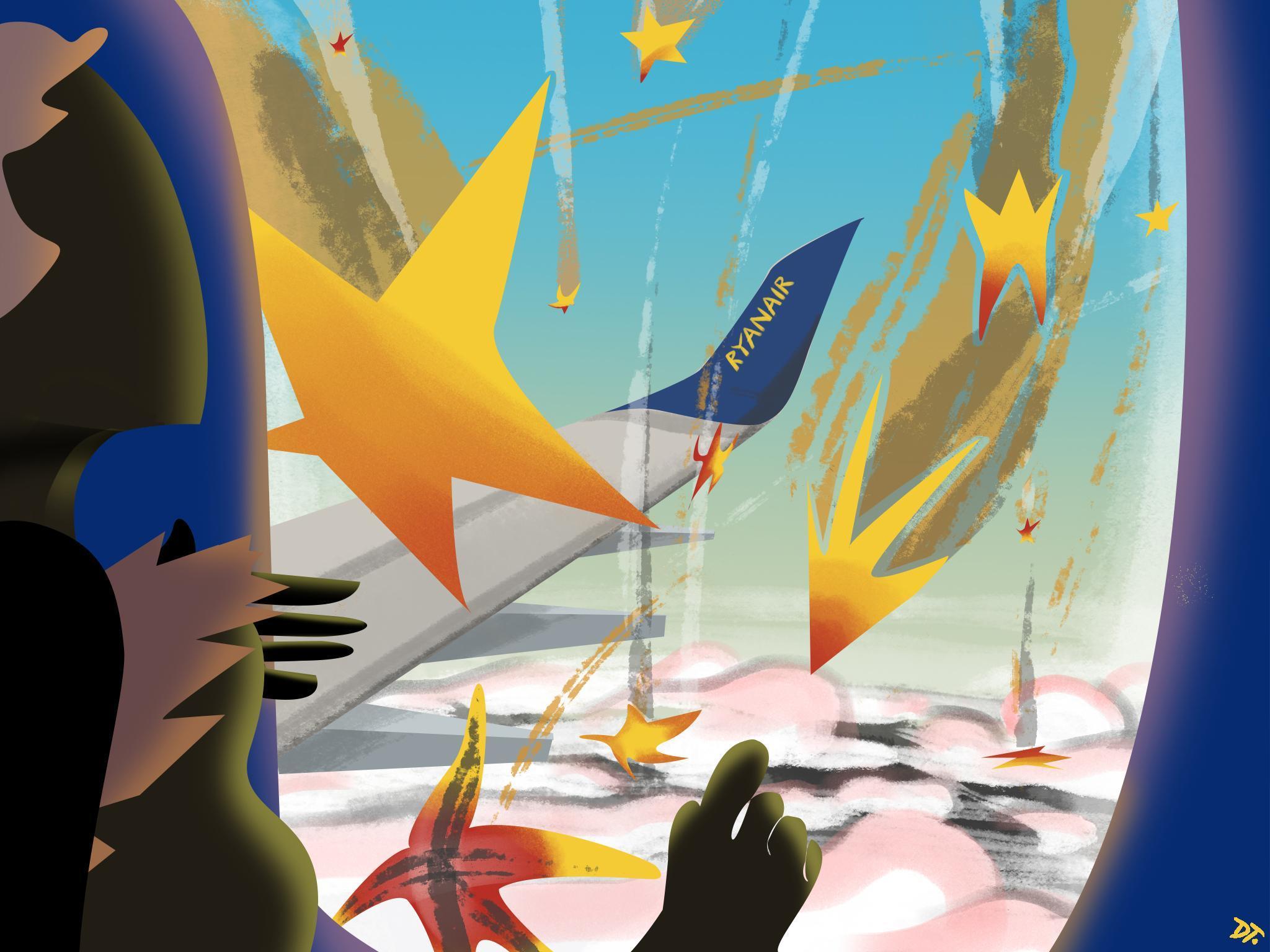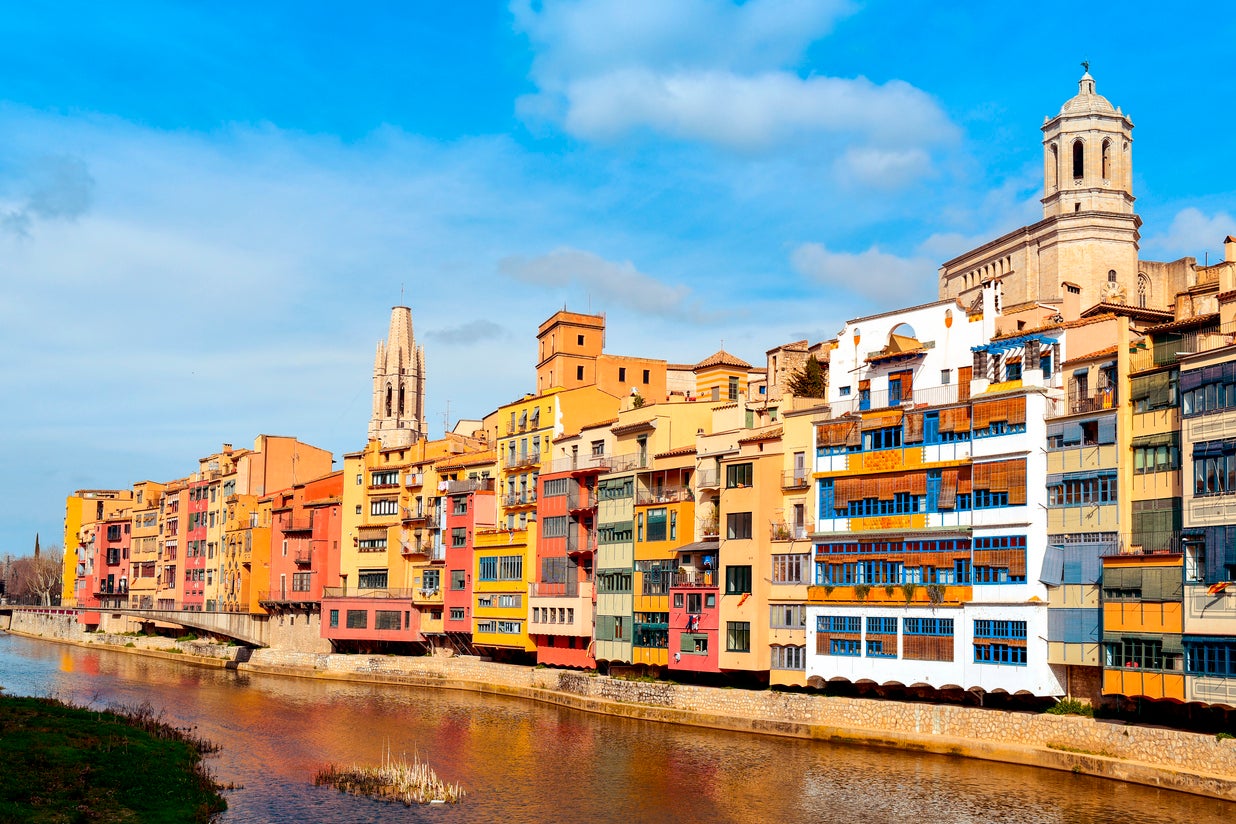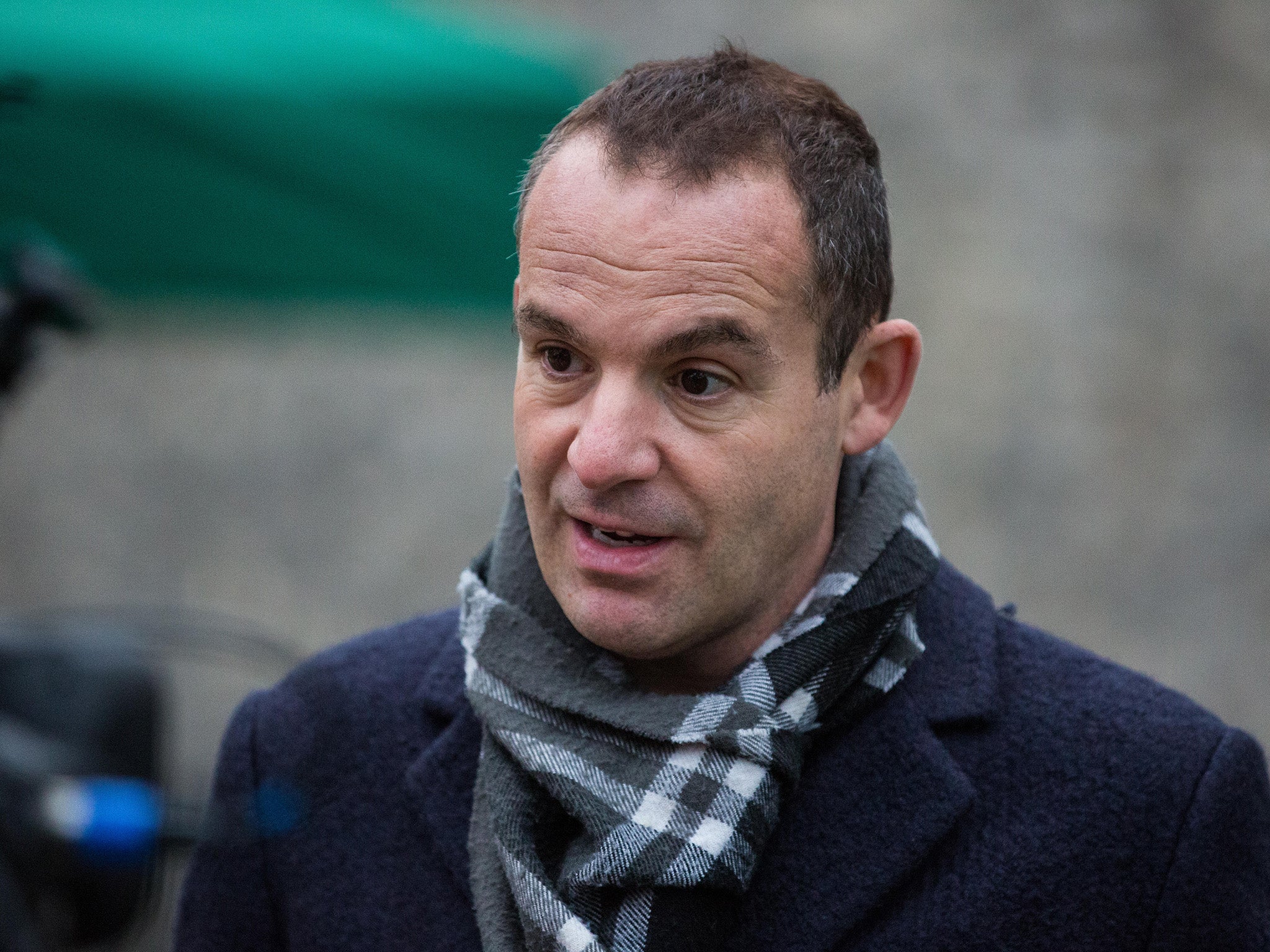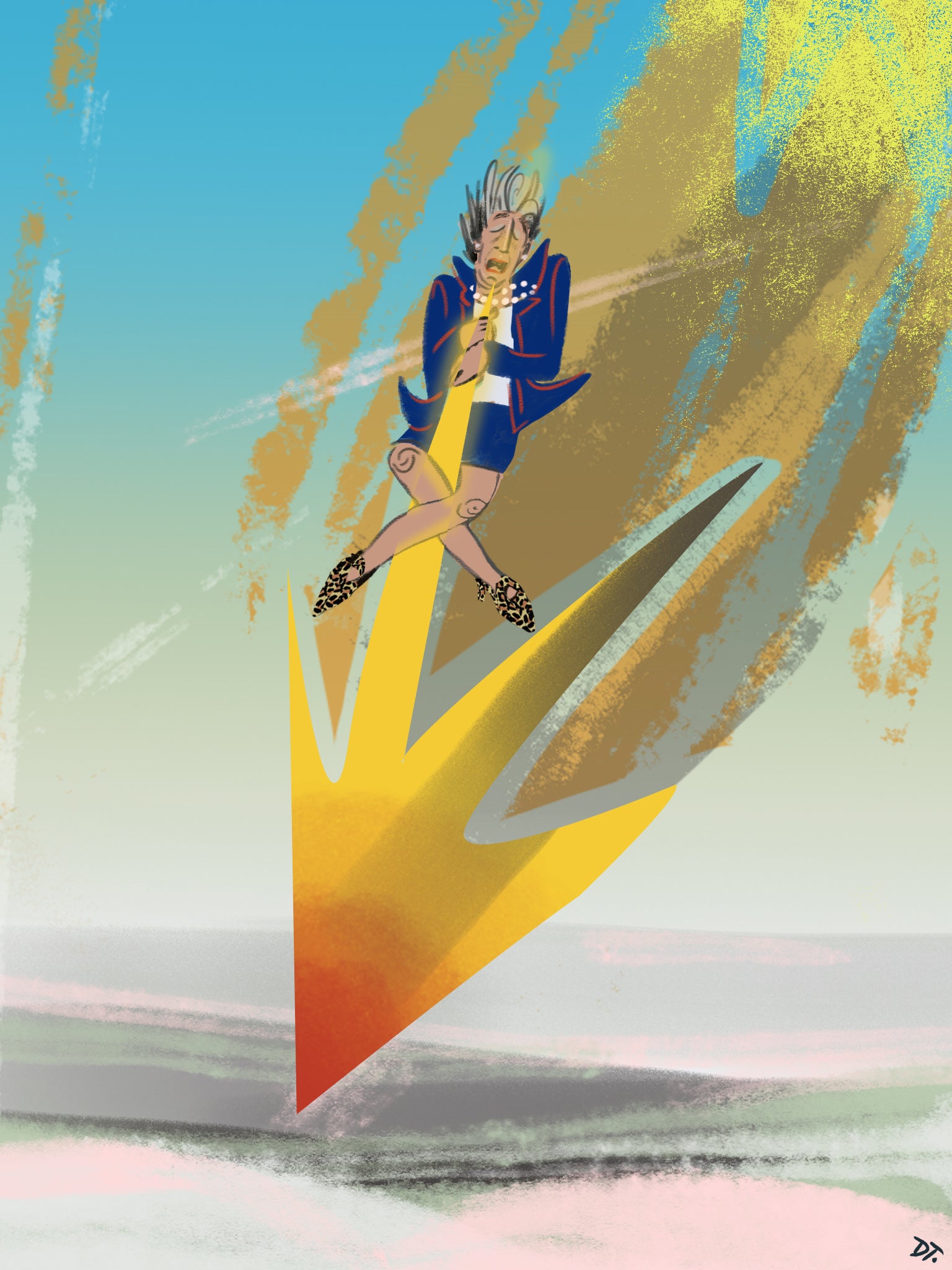Ryanair: The budget airline heading for oblivion or European domination?
Simon Calder, The Independent’s travel correspondent, has been following the much-criticised airline for three decades but wonders if we are all a bit too mean about it


Pity the poor Ryanair shareholder. According to the latest survey by Which?Travel, the Irish budget airline faces an uncertain future. To sustain its flying programme across Europe for 2019, the airline must sell 280 seats per minute. Yet according to the magazine: “Ryanair’s reputation has declined so much that thousands of respondents told the consumer champion that they would never again fly Ryanair, even if it was cheaper than its rivals.”
The editor, Rory Boland, said of the airline: “It has spent the past two years cancelling thousands of flights, ruining hundreds of thousands of holidays and flouting the rules on compensation as well. The results of our survey show passengers are fed up. They should switch to one of their rivals, which prove that budget prices don’t have to mean budget service.”
Ryanair’s share price has lost one-third in the past year, and is 40 per cent down on where it was in the summer of 2017. That was the summer when Ryanair started to upset passengers who choose not to pay for assigned seating. From May 2017, couples and groups who accepted “random seating” typically found themselves sitting in middle seats at the opposite ends of the aircraft. In September that year, thousands of passengers found their flights abruptly cancelled due to a shortage of pilots – which ultimately led to the grounding of 20,000 flights through the winter.

The airline then misrepresented its obligations to travellers whose flights it had cancelled, saying it was not responsible for finding departures on other airlines – even though the European air passengers’ rights rules (known as EC261) state carriers cancelling flights must pay for alternatives. Ryanair had its knuckles rapped by the Civil Aviation Authority (CAA).
280
The number of seats per minute Ryanair needs to sell
Soon afterwards the airline gave in to demands by crew for union recognition, the first time it had happened in 32 years.
The result: a string of strikes by pilots, cabin crew and airport staff. Many of them were coordinated by the International Transport Workers’ Federation, which said: “Demands of Ryanair workers – such as pay for all hours worked and an end to long-term agency employment – continue to go unaddressed.”
During 2018 many hundreds of flights were cancelled because of strikes by pilots and cabin crew. Some of the passengers affected sought compensation under EC261 regulations. Payouts are set at €250 (£223) for flights of up to 1,500km, and €400 (£357) for longer flights in Europe and North Africa. Their applications were rejected by Ryanair – which claimed the industrial action was caused by “extraordinary circumstances” and was “totally beyond the airline’s control”.
But in another unprecedented intervention, the CAA urged grounded holidaymakers to claim their entitlement. Ryanair still refused, and in December 2018 the authority launched enforcement action, insisting “consumers should be compensated in accordance with Regulation EC261”. For an airline to change its cabin-baggage policy more than once a decade is unusual – but Ryanair passengers had to adhere to three different sets of rules in 2018.

Now Martin Lewis, the MoneySavingExpert, has written to the chief executive, Michael O’Leary, about what he claims is a “systemic error” in the Ryanair booking process that changed travellers’ surnames in the same booking to be the same as the lead passenger’s. His organisation has sent a dossier of more than 160 cases to the CAA.
Ryanair’s present travails are at odds with its image as the cheeky underdog. In the 1990s, as a tiny Irish airline, it seized on the European Union’s “open skies” policy to create its leading hub at Stansted airport, flying British travellers across Europe and providing Continental travellers with cheap access to London and beyond. But as Brexit approaches, some say the Irish carrier is in disarray, losing passengers in droves and seemingly destined for oblivion.
How can a carrier that is apparently widely despised be selling seats at a rate of nearly five per second – and paying prodigious returns to shareholders?
Yet Ryanair is set for another year as the most successful airline in Europe, flying close to 150 million people. How can a carrier that is apparently widely despised simultaneously be selling seats at a rate of nearly five per second – and, relative to its rivals, paying prodigious returns to shareholders? The answer lies in Ryanair’s business model, which takes the “keep it simple” principle to extremes.
The airline has long operated only one type of aircraft, the Boeing 737-800. Pilots, cabin crew and engineers can work on any plane in the fleet. The 189 seats are another constant, avoiding the problems that other airlines – such as easyJet and British Airways – encounter when they “downsize” an aircraft.
Ryanair has not always been faithful to Boeing – in the early days it used Romanian-built BAC 1-11 planes, and after it bought the KLM offshoot, Buzz, for a short while it had BAe146 jets in the fleet. But the path to success became apparent as the world assimilated the tragedy of 9/11. The attack on America changed much in aviation, with airlines cancelling flights and aircraft orders wholesale. And Ryanair was transformed by behaving in the opposite way .
In the summer of 2001, Michael O’Leary was known in the airline business as a maverick, who had rescued an ailing regional airline by cutting fares to stimulate business. But by the end of September that year, he had become the fiercely controversial figure he remains – telling Radio 4’s Today programme that British Airways and other airlines were “screwing” the government for financial support.

“That’s a bit harsh, isn’t it?’ interjected John Humphrys.
“It’s a bit true,” said Mr O’Leary.
On 14 September 2001, the day that flights were allowed to resume across the US, with 50 new security directives in place, Boeing announced 25,000 lay-offs. In the next few days, Virgin Atlantic cut 1,200 jobs, together with its routes to Toronto and Chicago, while Aer Lingus shed 1,600 people – more than the total number employed by Ryanair. Two months after the tragedy, Ryanair predicted profits for the full financial year of close to £100m – about £10 for every passenger flown. Other airlines were haemorrhaging cash, or simply going bust (Ansett Australia, Swissair, Sabena of Belgium...).
The order books of Airbus and Boeing were full of cancellations. With some almost-new jets being flown to the desert for storage, no one was buying new aircraft. Which, from the point of view of a fast-expanding, opportunistic airline is the ideal time to order some new planes. In bulk. On 24 January 2002, Ryanair ordered 100 Boeing 737s with options on 50 more – the largest ever deal for the world’s most popular plane. The cost per aircraft remains a closely guarded secret but was probably around half the list price.
Low-cost aviation relies on keeping costs down. That is obvious to say, but much harder to do. Many elements of flying, such as fuel and air-traffic charges, are priced the same whether you are British Airways or Ryanair. But aircraft ownership costs are negotiable, and at a stroke Ryanair had achieved a deal way better than its rivals.
With the fleet set to treble in size, the airline set about expanding its network in a very low-cost way: setting up operations at “secondary” airports. Budget travellers soon became accustomed to finding their way to and from Frankfurt Hahn (closer to Luxembourg than to the German financial hub), Girona (“Barcelona” in Ryanair’s view) and Charleroi (“Brussels south”). Regional authorities poured millions of euros in “marketing support” into Ryanair’s operations, with accusations that the airline was benefitting from state aid.
The jury is still out on Ryanair’s play to be an airline for business travellers; between Frankfurt and Manchester, for example, the Irish carrier has a single mid-afternoon round trip
During an expansion that has proved, so far, recession-proof, the airline has long moved into the main airports for those cities, to the dismay of incumbents such as Lufthansa, Iberia and Brussels Airlines.
The jury is still out on Ryanair’s play to be an airline for business travellers; between Frankfurt and Manchester, for example, the Irish carrier has a single mid-afternoon round trip, while Lufthansa of Germany has five flights each way from dawn to late evening. Passengers on business want frequent flights and a near-certainty that they can get a seat on the next departure – yet Ryanair’s model is to fill its planes as close to capacity as it can.
In December, which for the first half is as low-season as the travel year gets, Ryanair flights were 95 per cent full – meaning just nine or 10 seats on the average aircraft remained empty. That achievement is all the more remarkable given the intensifying competition in short-haul aviation.
Ryanair and easyJet have a long history of not competing head-to-head. Over the years there have been some spectacular fares wars: easyJet retired hurt after launching flights to Ireland, and for a while it was difficult to pay more than £10 from Luton to Copenhagen. While the two giant carriers have historically competed on only a handful of airport-to-airport routes, expansion makes it increasingly difficult to avoid. And even though Primera Air of Iceland and Cobalt of Cyprus have recently gone bust, other budget carriers are expanding.

Wizz Air, the eastern European specialist, is now flying from Luton to a range of western European destinations. Norwegian Air and BA’s sister airline, Vueling, are also chasing the same market. And the “legacy carriers” from Air France to SAS are cutting costs to stay in the game. Ryanair begins 2019 as combative as ever. Cabin crew employed in Spain were planning strikes on 8, 10 and 13 January after failing to reach an agreement over employment conditions, but the airline faced them down.
Ahead of Brexit, Ryanair has obtained a UK air operator’s certificate that will allow it to operate British domestic routes and flights to destinations outside the European Union after 29 March. All the available evidence shows that the lowest-cost provider wins in aviation – even with consumer voices raised against it.
Ryanair may feel picked on by the authorities. At this time in 2018, Air France workers were gearing up for 15 days of strikes that disrupted many thousands of British travellers. Some BA passengers faced problems during the cabin-crew strikes that dragged on for months during 2017. Yet when the European Court of Justice ruled in April 2018 that wildcat strikes did not consititute “extraordinary circumstances”, the Civil Aviation Authority failed to urge BA and Air France travellers to claim compensation.
Which? Travel readers seem to have it in for Ryanair. The Boeing 737s it flies are identical to the bulk of Jet2’s fleet. They hold the same number of people in the same configuration. The only significant difference is that Ryanair’s fleet of 737-800s are younger. Jet2’s score for seating and cabin environment was four stars, while Ryanair received only one star.
The most fundamental requirement for any airline is safety, but when an organisation called Airlineratings.com released its top 10 for “the world’s safest low-cost airlines”, Ryanair was nowhere to be seen.
The UK’s struggling Flybe and the Anglo-German Thomas Cook Airlines made it, but there was no place for the Irish airline. Which is perplexing, because if you measure safety in terms of flying the highest number of passengers without any of them dying in an accident, Ryanair has the best safety record in the world by a country mile. Since its first flight in 1985, the airline has safely flown 1.25 billion people. Second place goes to easyJet, at 900 million passengers.
1.25bn
People have flown safely with Ryanair since 1985
British travellers have begun another year as the beneficiaries of the best-value air travel in the world, provided by the safest airlines. When easyJet was founded by Stelios Haji-Ioannou in 1995, his main message was that travellers could fly from London to Scotland for £29 – the price of a pair of jeans. Checking flights two days ahead, Ryanair will take you from Stansted to Edinburgh for under £26. And if that’s still too much, the airline will take you from Essex to Italy for under £15.
At a time when Europe is fragmenting and slightly more than half the UK apparently wants to be alone, Ryanair is arguably doing more to keep the continent together than a planeload of politicians: connecting families, enabling employment, allowing travellers to discover that Europe is a fascinating mosaic of cultures rather than an amorphous whole.
Back to that Which? Travel survey: “Of those who said there was one airline with which they’d never travel, 70 per cent named Ryanair – no other airline came close.”
Every passenger in Europe benefits from the existence of Ryanair. So while I find it surprising that the airline inflames so much adverse reaction, I believe that even the “bad-boy” image is a consumer benefit. By annoying sufficiently many people who have vowed never to fly on Ryanair, the Irish airline helps its rivals stay in business and keeps competition flourishing.
Join our commenting forum
Join thought-provoking conversations, follow other Independent readers and see their replies
Comments